This post may contain affiliate links. Please read our disclosure policy.
Leafy green parsley is a popular garnish in cooking, but what is it exactly? Find out why this aromatic herb is an excellent ingredient – not just a garnish! – in salads, marinades, sauces, and more.
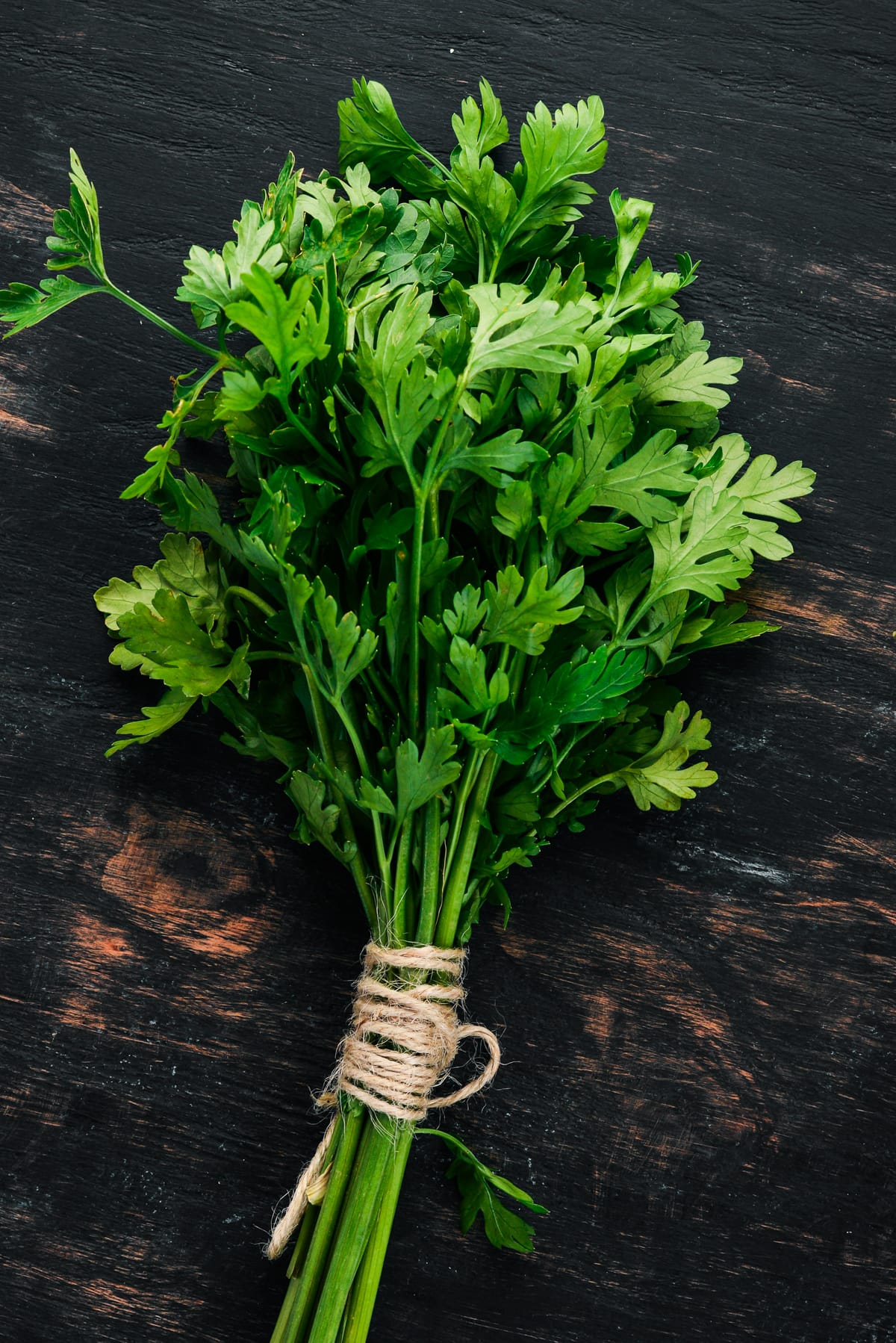
What Is Parsley, Anyway?
Parsley is a type of flowering plant native to the Mediterranean. It’s prevalent in coastal and Moroccan cuisines, but it has become an herbaceous staple in American cooking, too. You’ll find it fresh or as a dried herb. You’ve probably seen it before, in the form of bright pops of green scattered over everything from rigatoni bolognese pasta to blackened chicken. As an herb and a garnish, parsley has a robust green flavor, making it a fresh addition to many dishes.
You can eat it raw in salads or cooked into sauces, soups, and so much more. If you’ve been around here a while, you know that it’s one of my favorite ingredients, especially for garnish!
Is It Good for You?
Parsley has loads of health benefits in and outside of the kitchen. The leaves, seeds, and roots are all edible, and it’s considered one of the best disease-fighting plants (there’s a reason I sprinkle it over everything!). This herb is a source of many healthy nutrients, to name a few:
- Vitamins A, C, and K – Parsley is an excellent source of immune-boosting vitamins A and C, as well as vitamin K, which supports healthy bones. Just one ½ cup offers over 500% of the recommended daily value of vitamin K!
- Antioxidants – In addition to vitamin C, parsley contains other powerful antioxidants like flavonoids and carotenoids that help protect against cell damage and cancer.
Types of Parsley
Yes, there’s more than one kind of parsley! There are actually two main varieties that you’ll find in the produce aisle: French and Italian. They’re often used interchangeably in cooking, but there are some slight differences:
- French Parsley: French (curly-leaf) has a softer flavor, with thick, curly leaves that are more vibrant green than flat-leaf parsley.
- Italian Parsley: Italian (flat-leaf) has wider, flatter leaves, with a stronger flavor than French parsley.
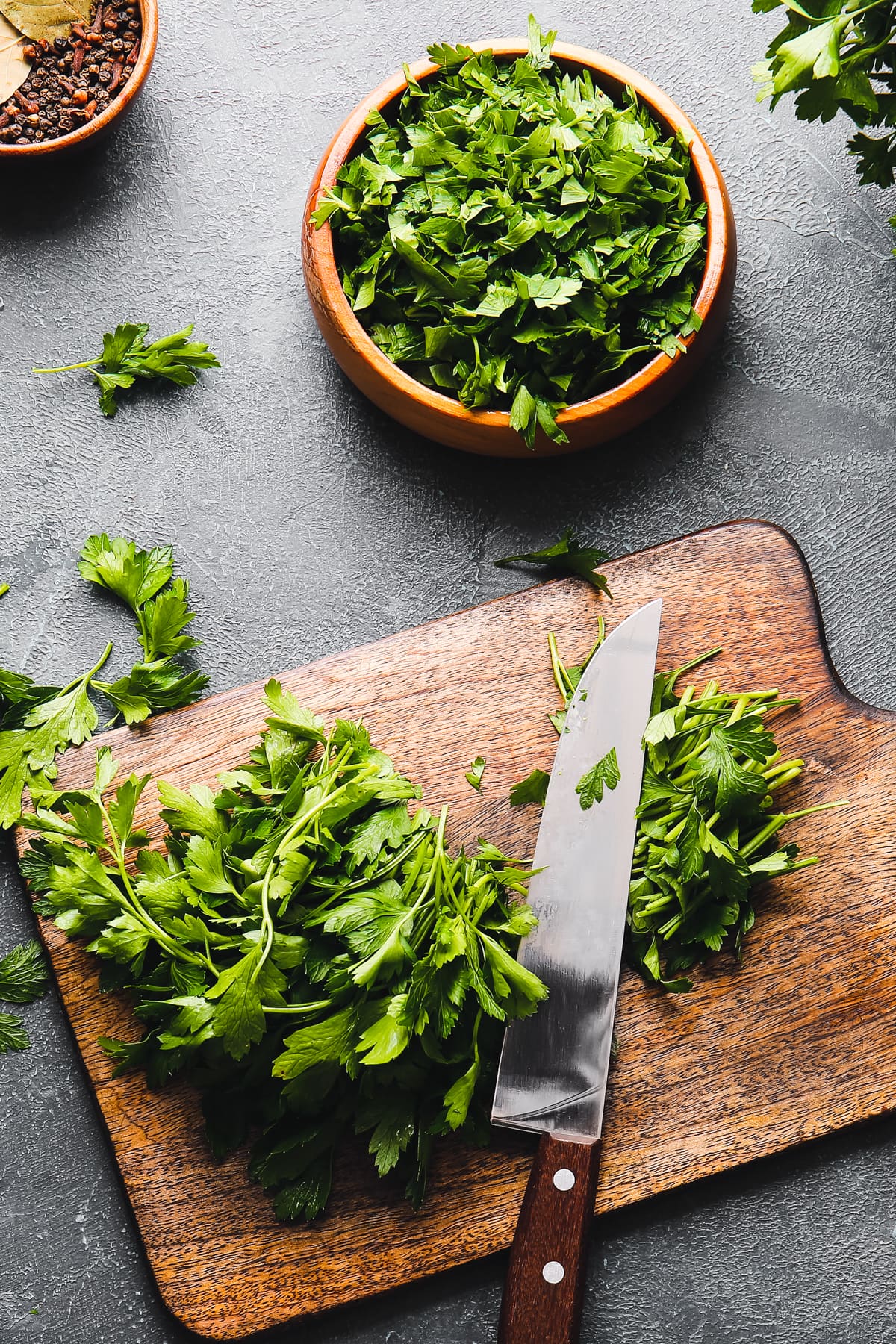
Parsley vs. Cilantro
Parsley and cilantro, also called coriander, look a lot alike. Raise your hand if you’ve ever picked up a bunch of what you thought was fresh parsley from the store, only to realize later that it’s cilantro. 🙋♀️ If your hand is up, you already know there’s a difference! Both are bright green, leafy herbs with long, thin stems. However, they are not the same herb. Here’s how to tell them apart:
- Leaves. Parsley leaves are pointed, while cilantro leaves are more rounded.
- Smell. Parsley has a fresh and mild herbal aroma. Meanwhile, cilantro has a stronger scent that’s more spicy and citrusy.
- Flavor. Parsley’s flavor is milder and more versatile, whereas cilantro brings a citrusy punch to the recipes its used in. Some people even insist that cilantro tastes like soap.
Can I Substitute Cilantro for Parsley?
Since these herbs have very different flavors, you can’t always substitute one for the other in recipes. Cilantro is popular in Mexican, Asian, and Indian cuisines, where its citrusy taste compliments the other spices. Meanwhile, parsley is the herb of choice in Middle Eastern and Mediterranean cooking. If you’re looking to substitute parsley, fresh or dried chervil, oregano, tarragon, and chives are the best choice.
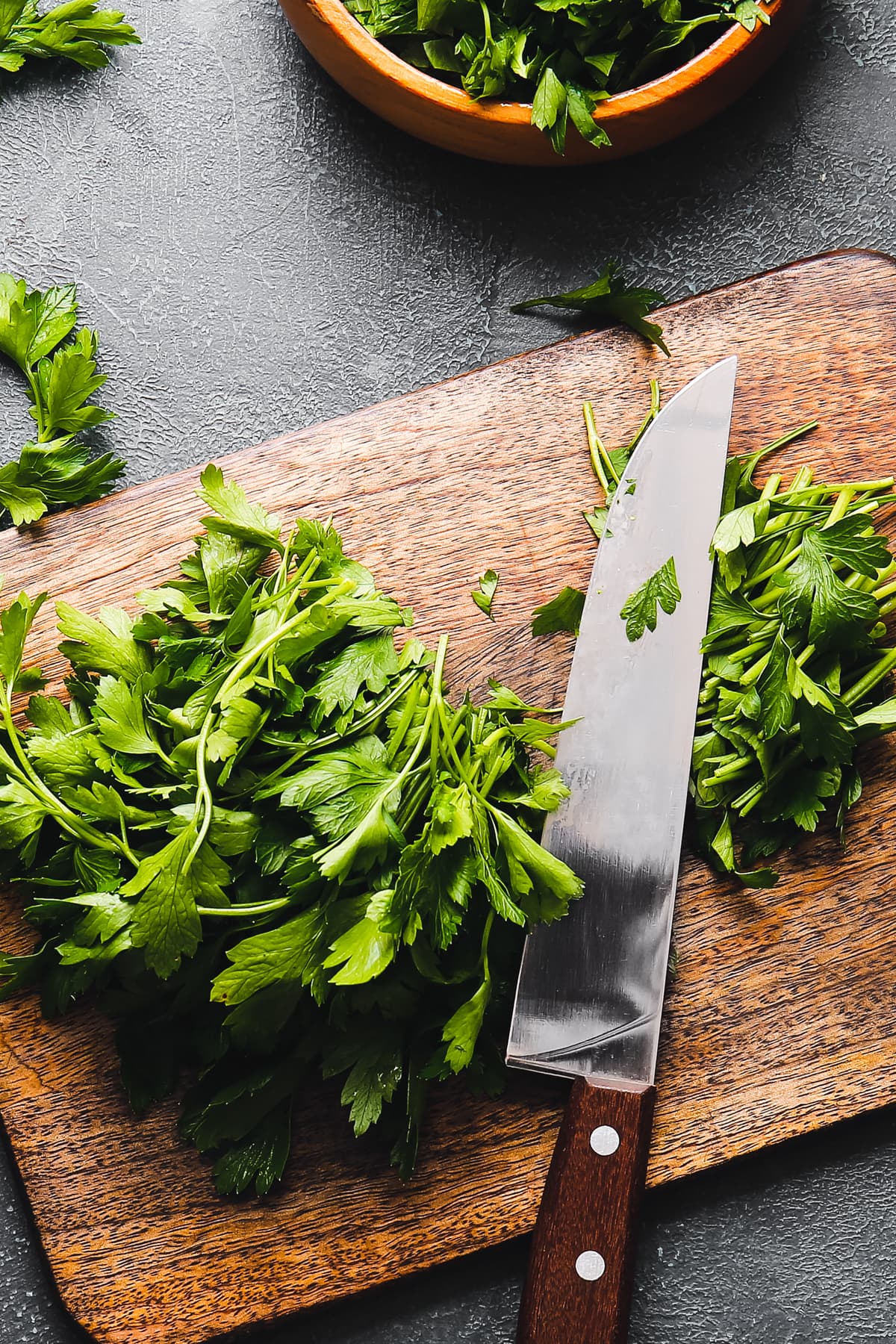
Chopping and Storing
Properly chopping parsley isn’t rocket science, though it does take a sharp knife and some (easy) technique. You can chop your herbs as rough or as fine as needed for whatever you’re cooking. Here’s how to chop parsley and store it:
- Wash. First, rinse the leaves and stems under cold water, then lay them out on paper towels and gently pat them dry. You can also chuck it in the salad spinner if you have one.
- Trim the stems. Next, line up the parsley you’ll need for your recipe. Use a sharp knife to cut the stems just below the leaves, where the stem gets thicker.
- Chop the leaves. With the leaves separated from the stems, use the knife to chop the leaves in a quick, up-down motion.
- Store. The best way to store parsley is in the fridge, wrapped in a damp paper towel. It will stay fresh for a few days. Alternatively, you can chop the leaves, store them loosely in a freezer-safe container or bag, and keep them frozen for up to 1 month.
- Save your stems! Parsley stems are great for preventing produce from browning. If you’re working with apples or another fruit or veggie that calls for lemon water to prevent browning, toss in some chopped parsley stems instead of lemons.
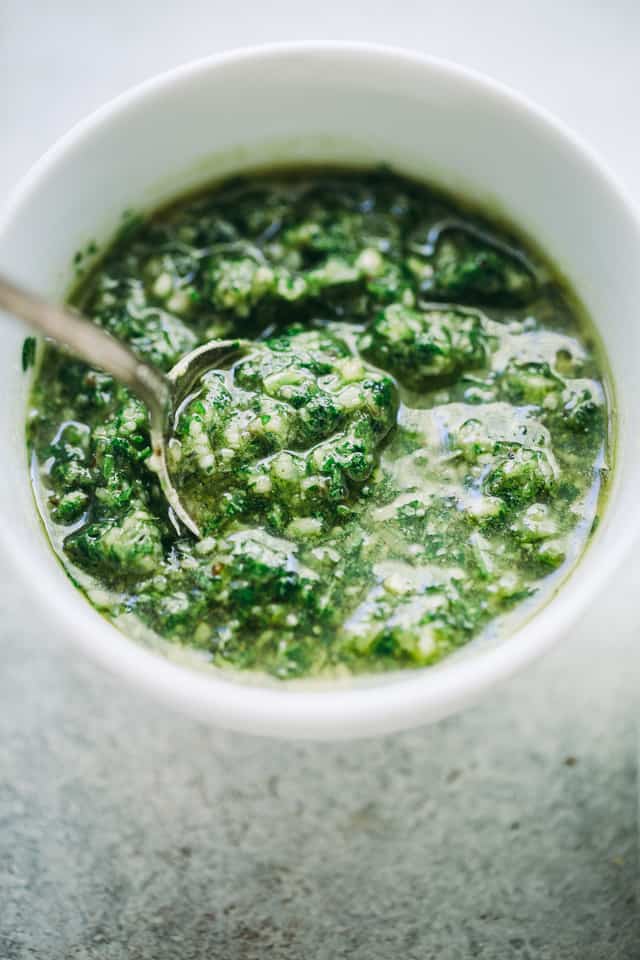
15 Easy Recipes with Parsley
Now that we’re schooled in the details of what makes parsley a must-have ingredient, try these easy recipes with fresh parsley that you can make tonight.
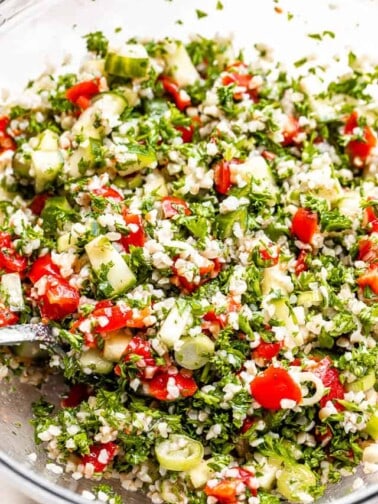
Tabbouleh Salad Recipe
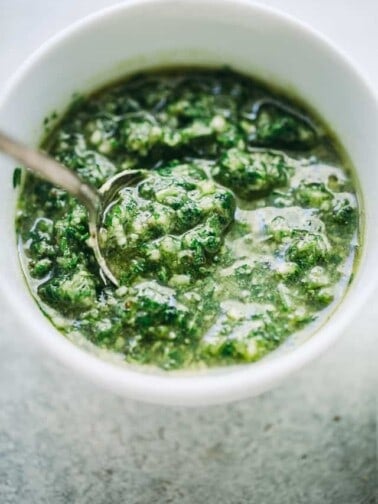
Parsley Pesto
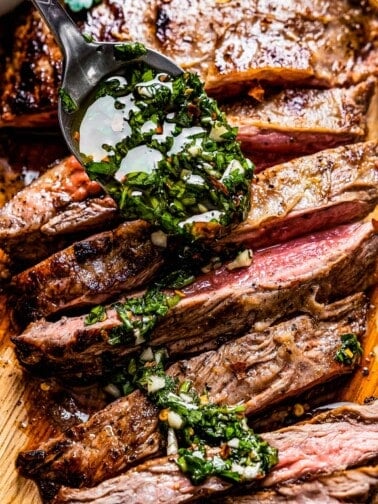
Churrasco Steak
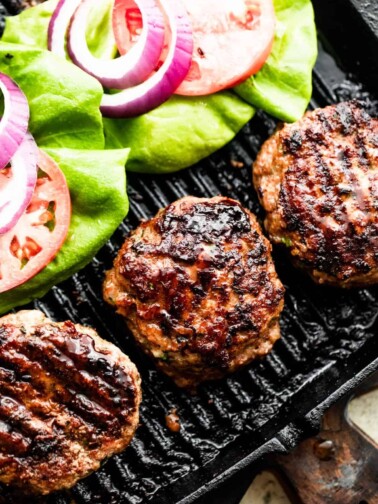
Juicy Grilled Turkey Burgers
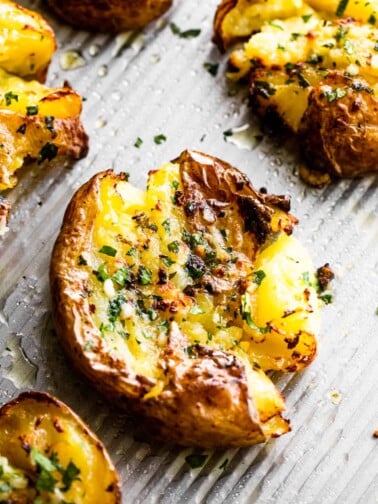
Crispy Smashed Potatoes
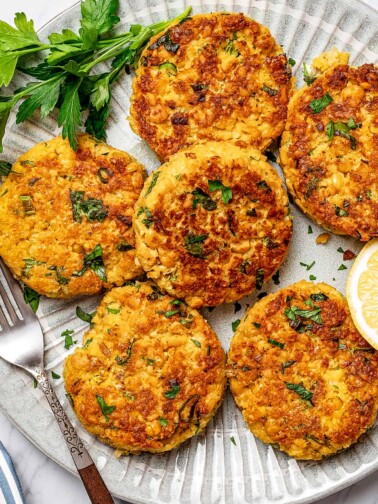
Chickpea Patties
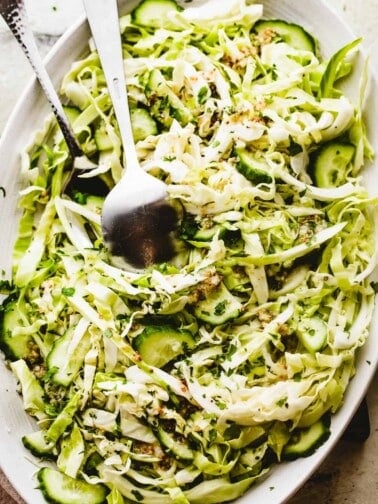
Cabbage Cucumber Salad

Chicken Piccata and Rice

Lemon Butter Grilled Salmon
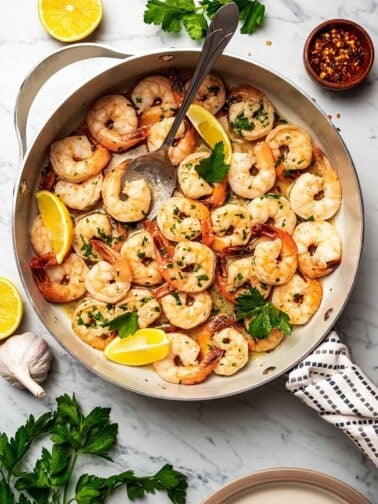
Shrimp Scampi Recipe

Caponata
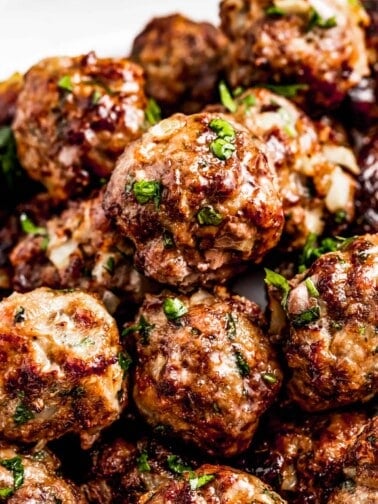
Air Fryer Meatballs
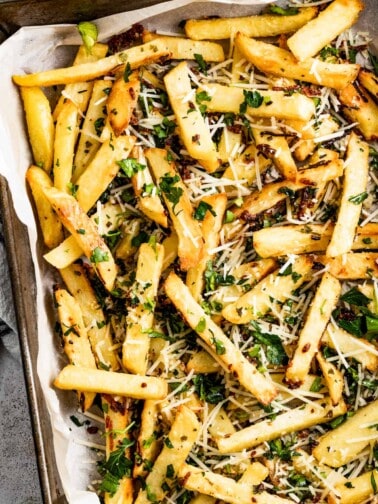
Parmesan Truffle Fries
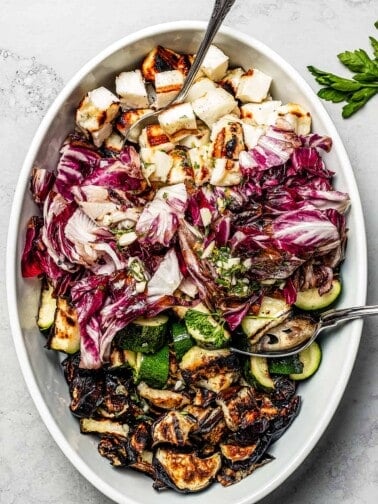
Grilled Vegetables
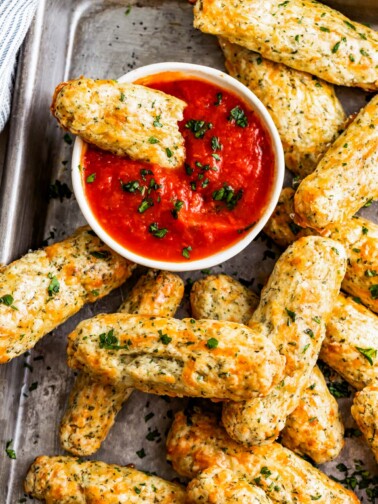
Baked Mozzarella Sticks
Craving more healthy recipes made with your favorite ingredients? Check out my recipe finder!
Sources: Healthline.com








